
As the winter frost settles over China’s vast landscape, a different kind of magic emerges – one that transforms familiar scenes into ethereal wonderlands. Let A Trails guide you through an insider’s journey to the most enchanting winter destinations that deserve a spot on your 2024 travel radar. Whether you’re seeking cultural immersion or tranquil escapes, you’ll find a warm welcome in these stunning locales.
Harbin
Where Ice Dreams Take Flight
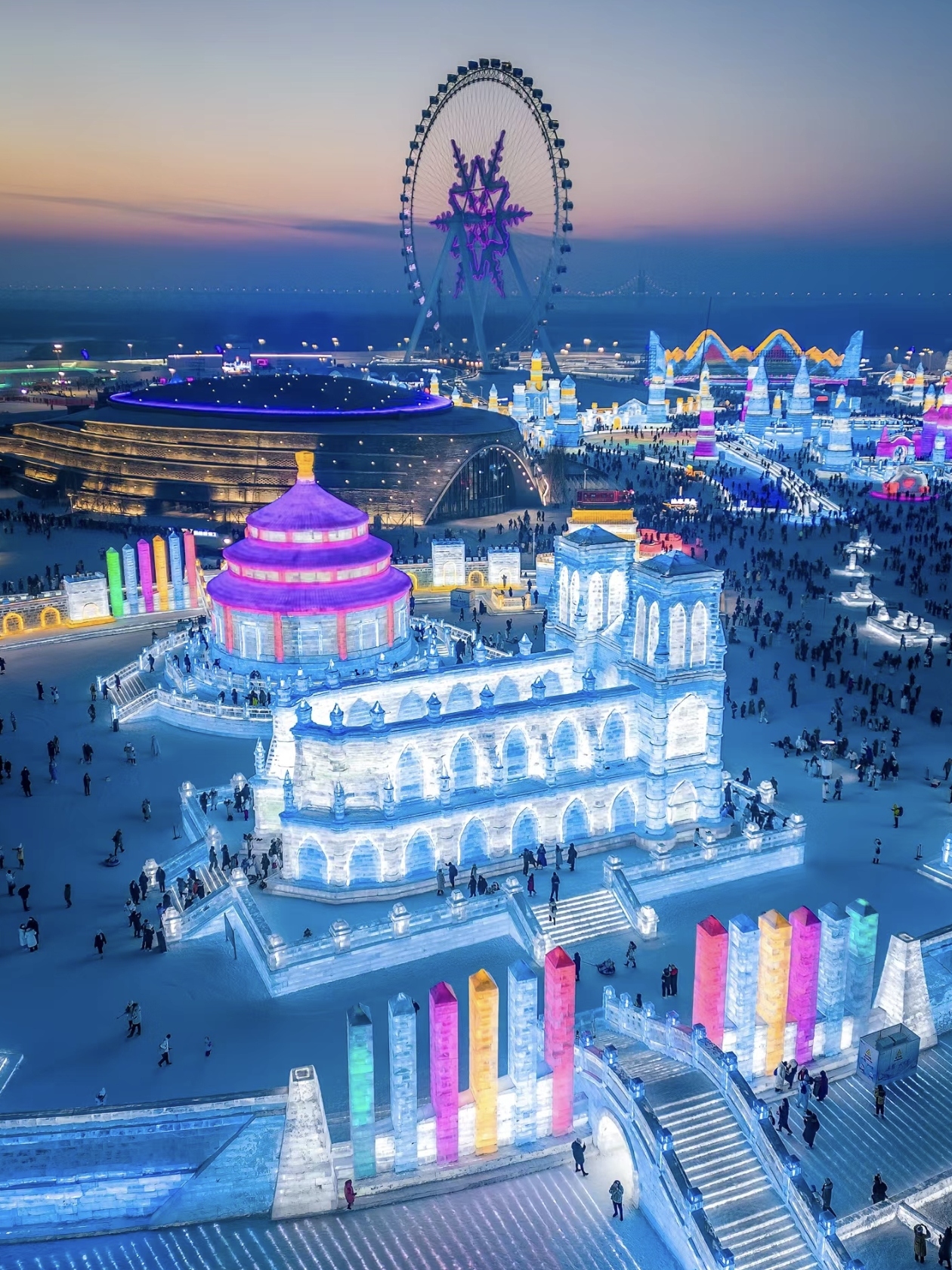 Xiaohongshu @泡泡旅行记
Xiaohongshu @泡泡旅行记
In the far reaches of China’s northeast, Harbin transforms into a magical winter kingdom, anchored by two magnificent attractions that define its winter charm: the world-renowned Ice and Snow Festival and the historic Saint Sophia Cathedral.
The International Ice and Snow Festival
(December-February)
 Xiaohongshu @驭行纪-亲子假期
Xiaohongshu @驭行纪-亲子假期
This spectacular festival stands as the world’s largest winter celebration, turning Harbin into an ethereal city of ice. Massive sculptures, some reaching heights of 50 meters, create a crystalline skyline that glows with technicolor brilliance after dark.  Xiaohongshu @IMPRESSION徐帅
Xiaohongshu @IMPRESSION徐帅
Master craftsmen from around the globe compete to create elaborate frozen masterpieces, from detailed replicas of world landmarks to fantastical creatures that seem to come alive under the northern lights. The festival spans three main venues: Ice and Snow World, where monumental illuminated ice buildings create a surreal nocturnal playground; Sun Island’s Snow Sculpture Exposition, showcasing intricate artworks carved from compressed snow; and Zhaolin Park’s Ice Lantern Fair, featuring delicate ice sculptures that pay homage to traditional Chinese artistry.



 Xiaohongshu @我的MJ笔记
Xiaohongshu @我的MJ笔记 
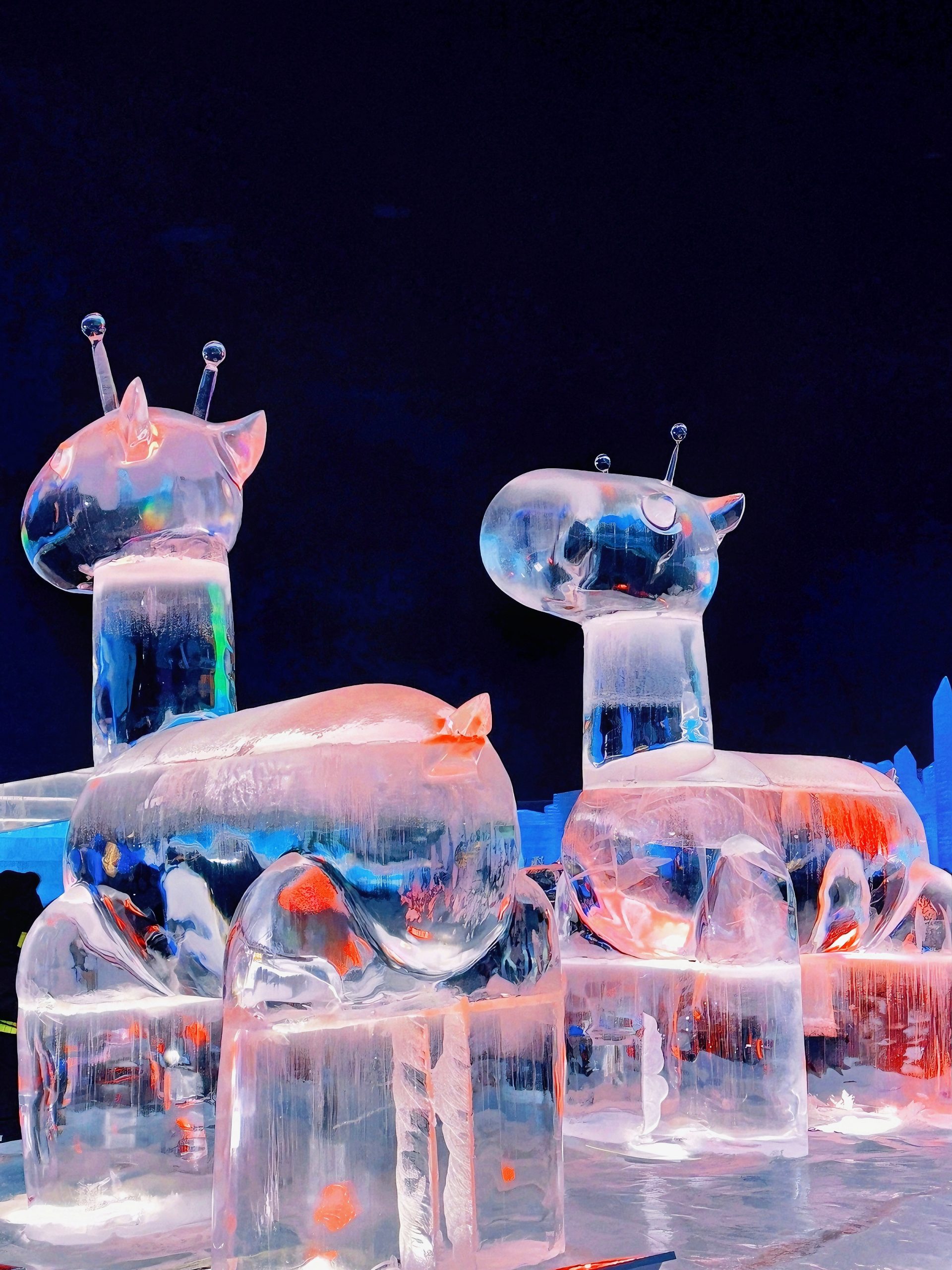 Xiaohongshu @南山乔木
Xiaohongshu @南山乔木
Insider Tip: Visit Ice and Snow World after 4pm when the crowds thin and the lighting transforms the ice city into its most magical state. Bundle up properly – temperatures can plunge to -25°C, but the spectacle is worth braving the cold.
Saint Sophia Cathedral :A Russian Legacy in Ice
Standing majestically in central Harbin, the Saint Sophia Cathedral serves as a stunning testament to the city’s unique Russian heritage. This Byzantine-style Orthodox church, built in 1907, becomes even more enchanting in winter when its distinctive green domes and red-brick facade contrast dramatically with the surrounding snow. The cathedral’s interior, now housing the Harbin Architecture Art Gallery, tells the fascinating story of the city’s multicultural past through historical photographs and exhibits.
 Xiaohongshu @爱自由的蜻蜓
Xiaohongshu @爱自由的蜻蜓
During winter evenings, carefully positioned lights illuminate the cathedral, creating a mesmerising sight as snowflakes dance around its towers. The square surrounding the cathedral becomes a popular gathering spot where visitors can enjoy traditional treats from nearby vendors while photographing this architectural masterpiece against the winter sky.
 Xiaohongshu @呼呼~来
Xiaohongshu @呼呼~来
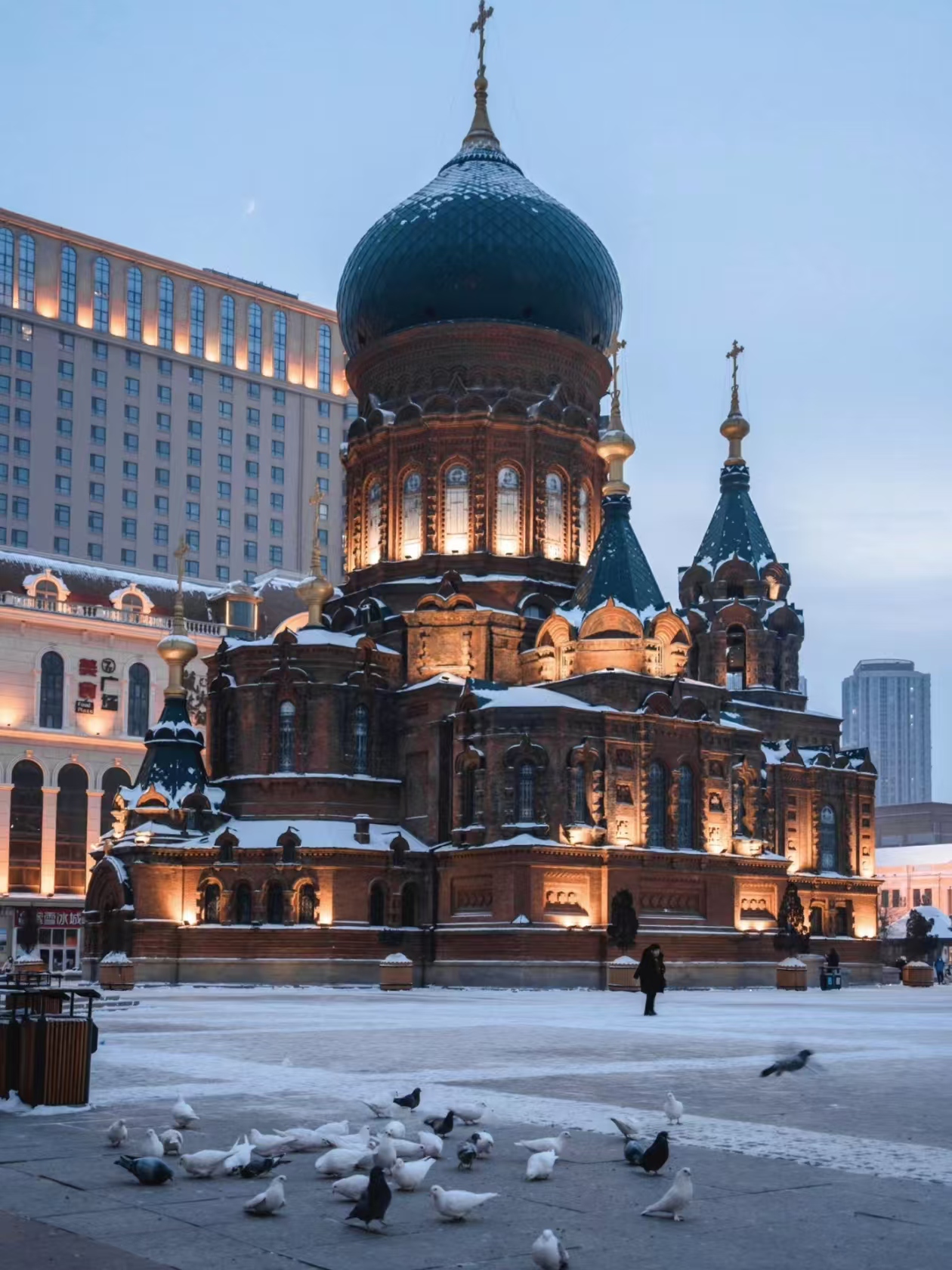 Xiaohongshu @汤忆tang
Xiaohongshu @汤忆tang
Cultural Tip: Visit early morning to capture the cathedral in perfect lighting conditions, when the rising sun casts a golden glow on its snow-dusted domes. The nearby Central Street (Zhongyang Dajie) offers excellent Russian restaurants where you can warm up with authentic borscht and beef stroganoff.
Where to Stay: The newly renovated Songbei Shangri-La offers panoramic views of the frozen Songhua River and provides a luxurious retreat from the winter chill. For a more historic experience, consider the Modern Hotel, where you can sip traditional Russian-style hot chocolate in the same halls that once hosted travelers on the Chinese Eastern Railway.
Yunnan’s Gems:Xishuangbanna&Dali, Lijiang , Shangri-La
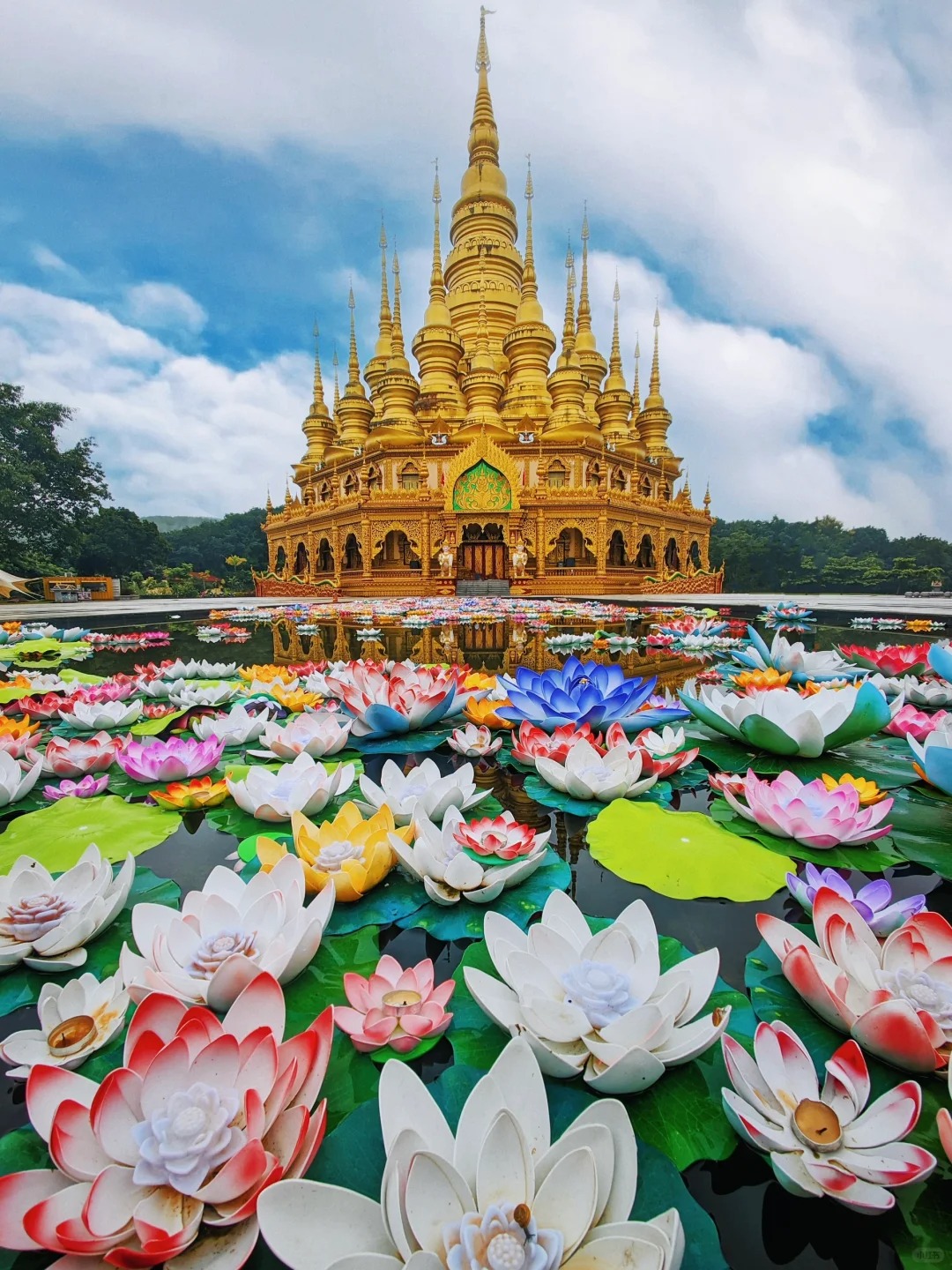 Xiaohongshu @Abby✨
Xiaohongshu @Abby✨
✦ Xishuangbanna:A Tropical Haven in Winter’s Embrac
 Xiaohongshu @秦添Sunning_
Xiaohongshu @秦添Sunning_
While the rest of China bundles up against winter’s chill, Xishuangbanna offers a balmy retreat with its year-round tropical climate. This exotic corner of Yunnan Province becomes particularly appealing during winter months, when temperatures hover perfectly between 15-25°C (59-77°F), and the typically humid air gives way to refreshingly dry days.
The region’s crown jewel, the Tropical Rainforest Nature Reserve, presents its most accessible face during winter. The dry season means clearer trails and better chances of spotting wildlife, from playful gibbons to vibrant tropical birds. The elevated canopy walkway, stretching through ancient trees draped in orchids and lianas, offers a bird’s-eye view of this pristine ecosystem.
 Xiaohongshu @阿斯巴甜_\
Xiaohongshu @阿斯巴甜_\
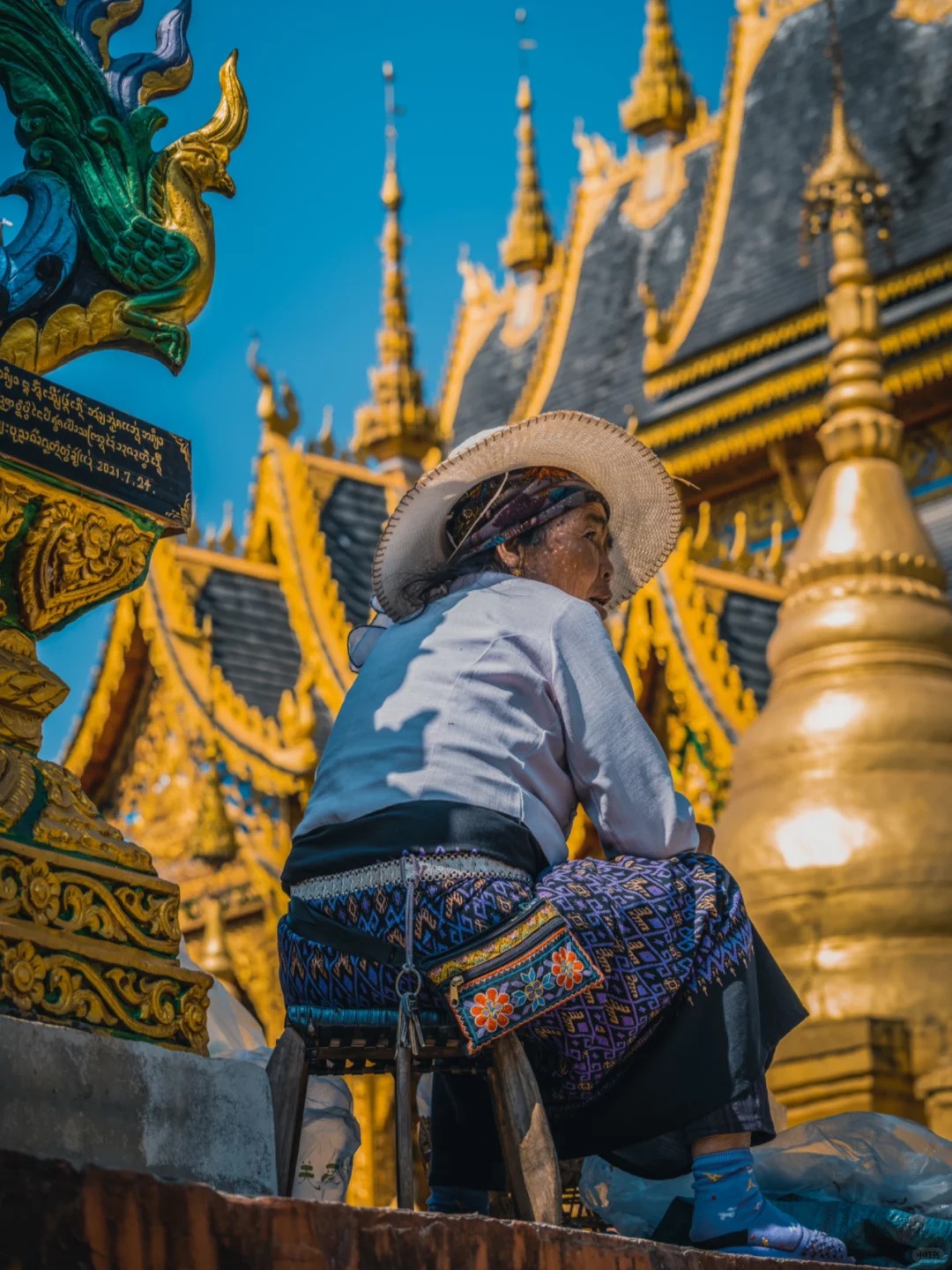 Xiaohongshu @胡阿毛
Xiaohongshu @胡阿毛 Xiaohongshu @张浮优
Xiaohongshu @张浮优 Xiaohongshu @土特产普洱茶李哥
Xiaohongshu @土特产普洱茶李哥
As evening falls, Xishuangbanna transforms into a festival of lights and flavours. The Enchanting Starlight Night Market comes alive with the aromas of sizzling Dai cuisine and the sounds of traditional music. Here, visitors can sample local delicacies like grilled fish in banana leaves and sticky rice in bamboo while browsing handicrafts that reflect the region’s rich Dai heritage.
 Xiaohongshu @遇见
Xiaohongshu @遇见 Xiaohongshu @兔子哥哥旅行笔记
Xiaohongshu @兔子哥哥旅行笔记 Xiaohongshu@阿子也
Xiaohongshu@阿子也
Cultural Immersion: Visit the Dai Ethnic Garden, where traditional stilt houses stand proud against the winter sky. Winter evenings here often feature authentic Dai cultural performances, with locals dressed in brilliant silks performing traditional peacock dances.
 Xiaohongshu @暴走的桃桃🍑
Xiaohongshu @暴走的桃桃🍑 Xiaohongshu @向云端
Xiaohongshu @向云端
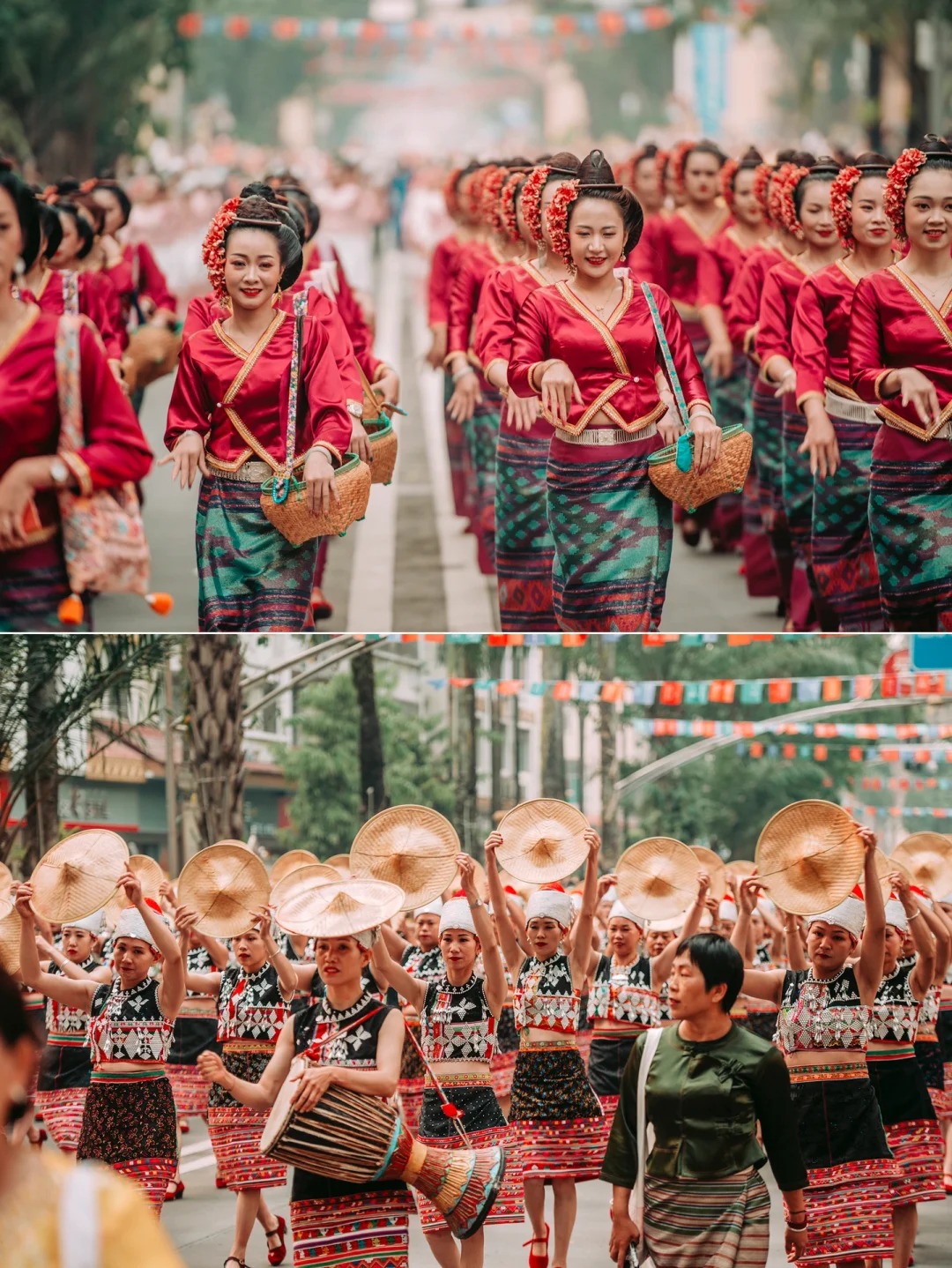 Xiaohongshu @摄影师York
Xiaohongshu @摄影师York
Wellness Tip: Don’t miss the natural hot springs nestled in the jungle. The contrast between the cool winter evening air and the warm mineral waters creates a uniquely refreshing experience.
 Xiaohongshu @别动我的百事
Xiaohongshu @别动我的百事
 Xiaohongshu @小红薯645A1103
Xiaohongshu @小红薯645A1103
✦ Yunnan’s Triple Gems:From Dali to Shangri-La
Dali
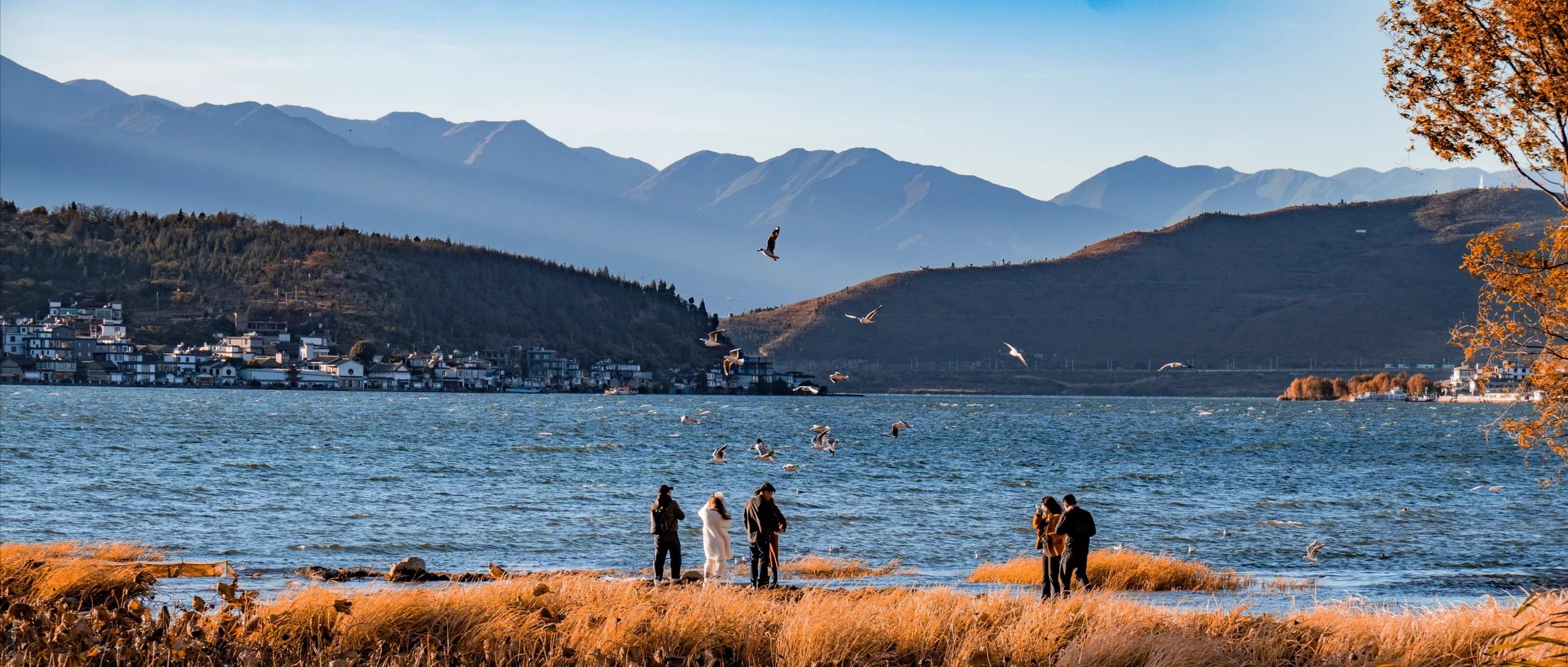 Xiaohongshu @jack船长
Xiaohongshu @jack船长
Dali presents a fascinating climatic contradiction – snow-capped Cangshan Mountain towers over fields of winter flowers. Though December marks the off-season in Dali, winter here feels like an eternal spring. Cherry blossoms line the streets in full bloom, and when paired with the distinctive Bai architecture, the scene transforms into what feels like stepping into an animated wonderland. The juxtaposition creates a dreamlike quality that defies the conventional notion of winter, as if nature herself has decided to paint this corner of Yunnan in perpetual spring hues.
 Xiaohongshu @swing_窝
Xiaohongshu @swing_窝 Xiaohongshu @秘制鱼酱
Xiaohongshu @秘制鱼酱
 Xiaohongshu @行走的咸鱼
Xiaohongshu @行走的咸鱼
Local Secret: The best views of Erhai Lake are from the lesser-known Xizhou Town, especially during winter sunrise when mist hovers over the water.
 Xiaohongshu @哩哩
Xiaohongshu @哩哩
Lijiang
 Xiaohongshu @草莓cutecute
Xiaohongshu @草莓cutecute
Ascending northward, Lijiang presents a unique winter charm beneath soaring peaks. While the majestic Jade Dragon Snow Mountain stands eternal with its year-round snow cover, the UNESCO-listed ancient town below maintains its gentle beauty even in winter months. Along the cobblestone streets, winter-blooming camellias add splashes of colour to the ancient walls, while crystal-clear streams weave under ancient bridges, their melodic flow accompanying the daily rhythms of Naxi life. Though the winter air is crisp, the town’s sheltered position creates a microclimate that sustains life and beauty year-round, offering a captivating contrast with the snow-crowned mountain that towers above.
 Xiaohongshu @草莓cutecute
Xiaohongshu @草莓cutecute
 Xiaohongshu @Liz周边
Xiaohongshu @Liz周边
 Xiaohongshu @路路瑶
Xiaohongshu @路路瑶
Cultural Tip: Visit Sifang Street in the early evening to experience the Naxi Ancient Music performance – these melodious tunes, passed down through generations, take on an ethereal quality in the winter air against the backdrop of snow-dusted tiles.
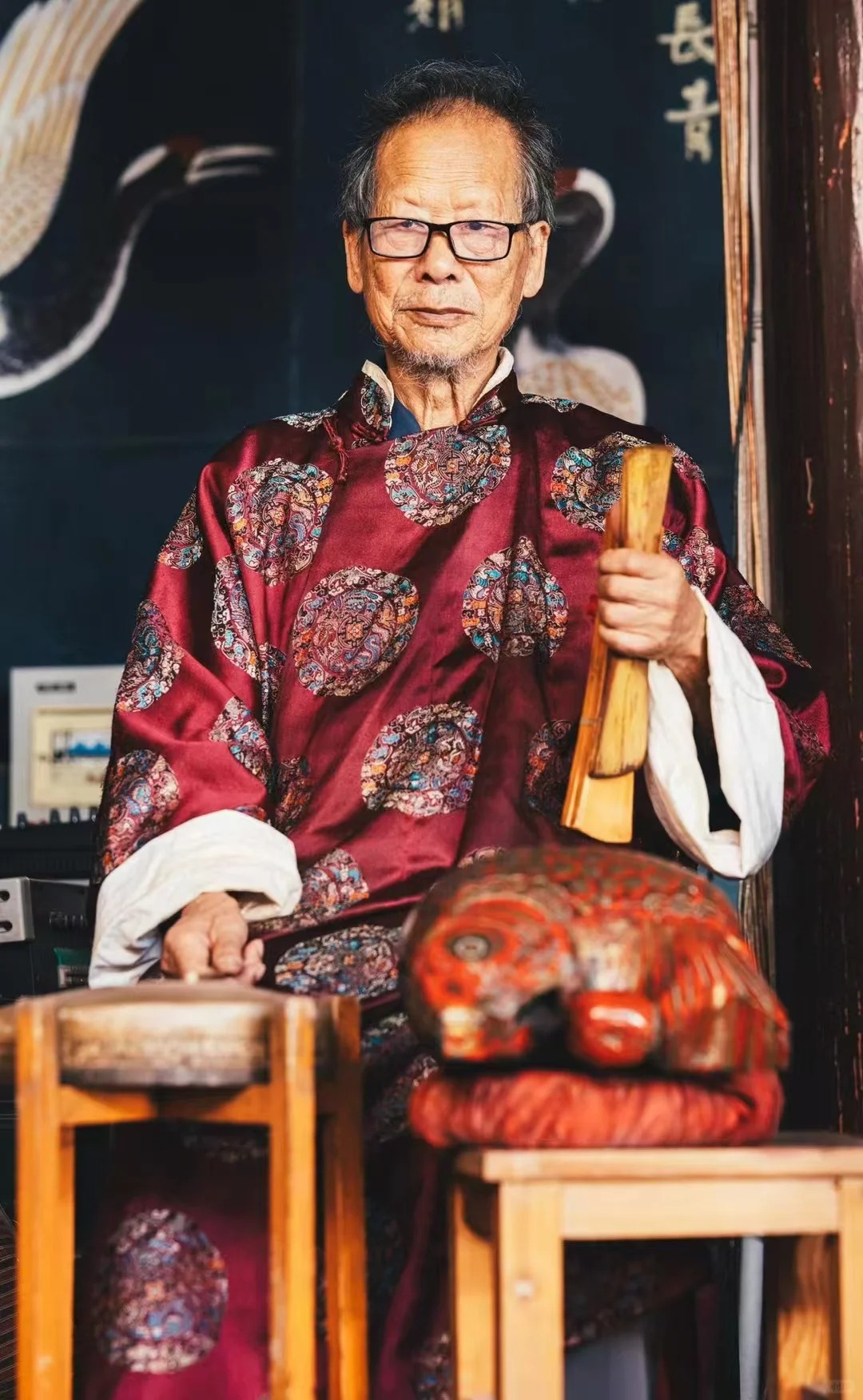 Xiaohongshu @丽江宣科大研纳西古乐会
Xiaohongshu @丽江宣科大研纳西古乐会
Shangri-La
 Xiaohongshu @然诺·香格里拉墅院
Xiaohongshu @然诺·香格里拉墅院
The crown jewel of this trinity, Shangri-La (formerly Zhongdian) lives up to its legendary name in winter. At 3,200 meters above sea level, the world’s largest prayer wheel stands sentinel over Songzanlin Monastery, its golden roof gleaming against pristine snow. Here, Tibetan culture thrives in the crisp mountain air, offering glimpses of a way of life that has endured for centuries.
 Xiaohongshu @账户不存在
Xiaohongshu @账户不存在
 Xiaohongshu @账户不存在
Xiaohongshu @账户不存在
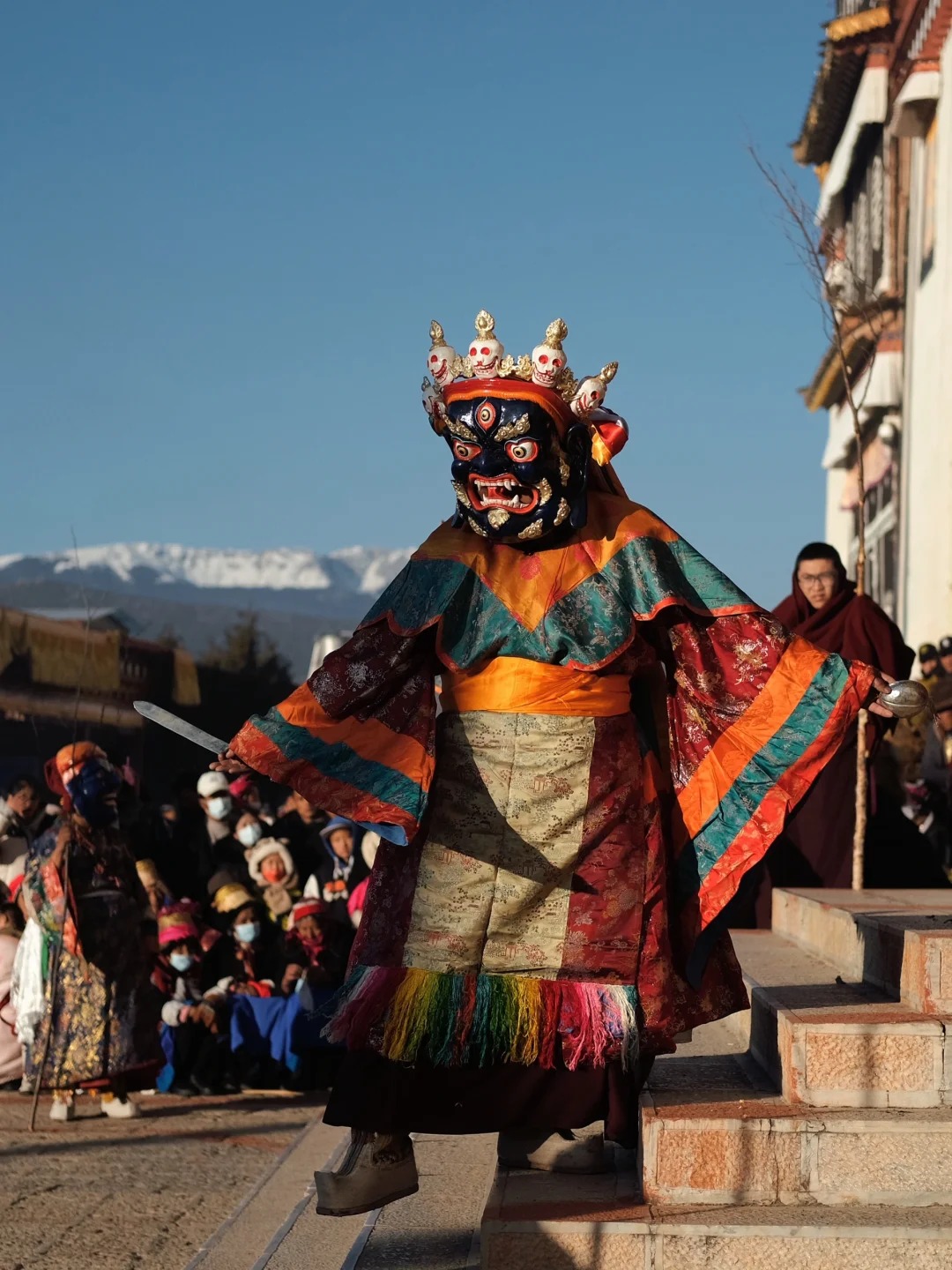 Xiaohongshu @lisiqi有大福
Xiaohongshu @lisiqi有大福
Insider Tip: Time your visit to coincide with morning prayers at Songzanlin Monastery – the sound of horns echoing across the snow-covered valley creates an unforgettable sensory experience.
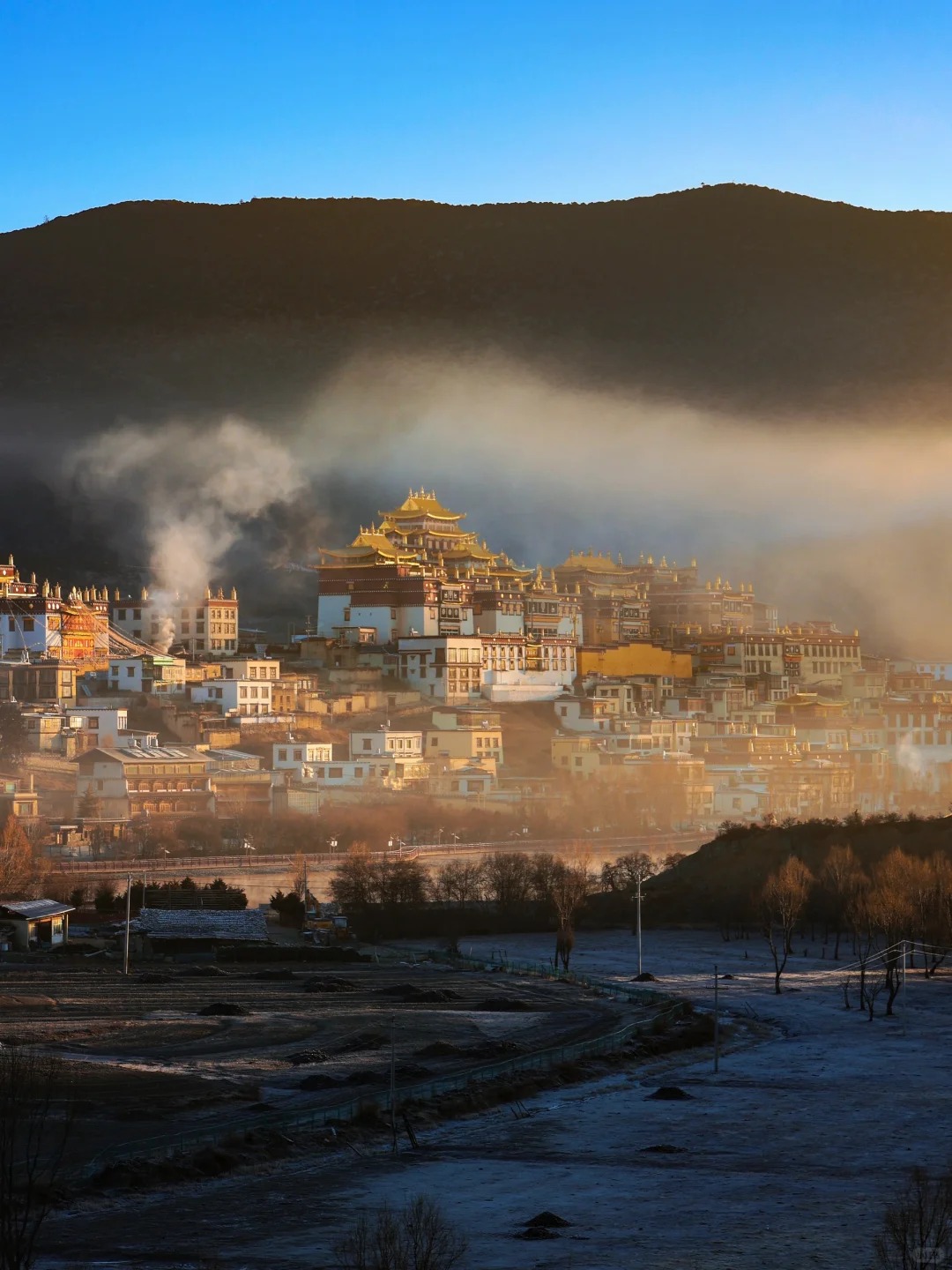 Xiaohongshu @小卖部阿姨
Xiaohongshu @小卖部阿姨
Changbai Mountain:Premium Ski Paradise
 Xiaohongshu @一只林崽
Xiaohongshu @一只林崽
The sacred peaks of Changbai Mountain offer a pristine winter playground that rivals the Swiss Alps. The mountain’s crown jewel, Heaven Lake, freezes into a mirror-like expanse, reflecting the crisp blue skies above. Hot springs bubble beneath the snow, creating an extraordinary contrast of temperatures that feels almost mystical.
 Xiaohongshu @Darling
Xiaohongshu @Darling
 Xiaohongshu @樱桃桃cookie
Xiaohongshu @樱桃桃cookie

Chengde:Imperial Winter Retreat
 Xiaohongshu @Catcher
Xiaohongshu @Catcher
The former summer resort of Qing emperors takes on a different character in winter. The Mountain Resort’s pavilions and temples, dusted with snow, offer a glimpse into imperial China’s grandeur. The nearby hot springs, once reserved for royalty, now welcome winter visitors seeking warmth.
 Xiaohongshu @百万同学
Xiaohongshu @百万同学
 Xiaohongshu @顾影自莲
Xiaohongshu @顾影自莲
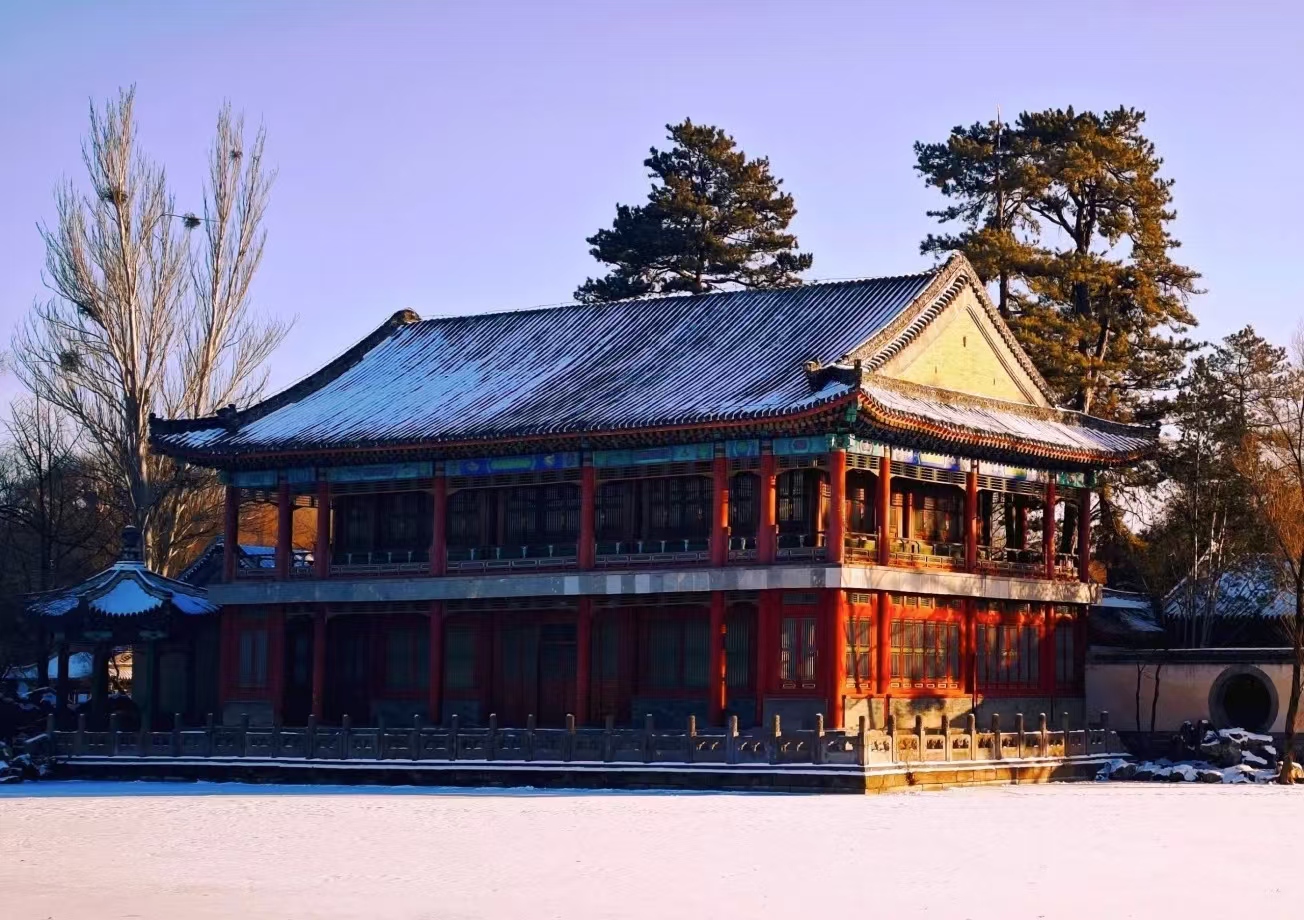 Xiaohongshu @祁健
Xiaohongshu @祁健
Historical Insight: The Putuo Zongcheng Temple, modelled after Tibet’s Potala Palace, is particularly stunning against the winter sky.
 Xiaohongshu @星影人
Xiaohongshu @星影人
Zhangjiajie:Avatar’s Winter Wonderland
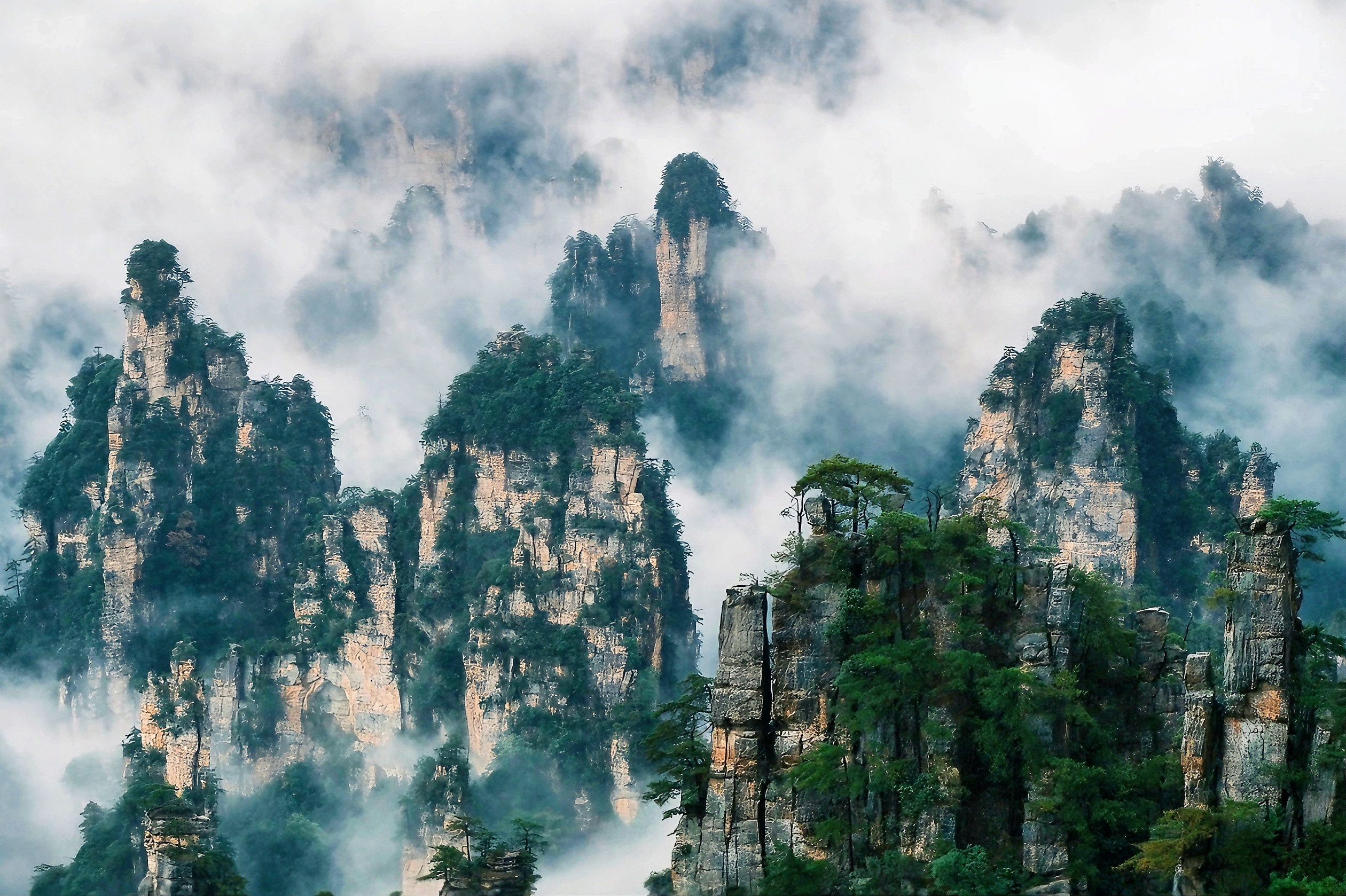 Xiaohongshu @荷子畫事
Xiaohongshu @荷子畫事
When winter descends upon Zhangjiajie’s towering sandstone pillars, it creates a scene straight from a Chinese ink painting. The famous floating mountains that inspired James Cameron’s Avatar take on an entirely different character when dusted with snow, while the glass elevator and walkways offer vertigo-inducing views of the winterscape below.
 Xiaohongshu @变成小狗
Xiaohongshu @变成小狗
 Xiaohongshu @Cecilia🌙
Xiaohongshu @Cecilia🌙
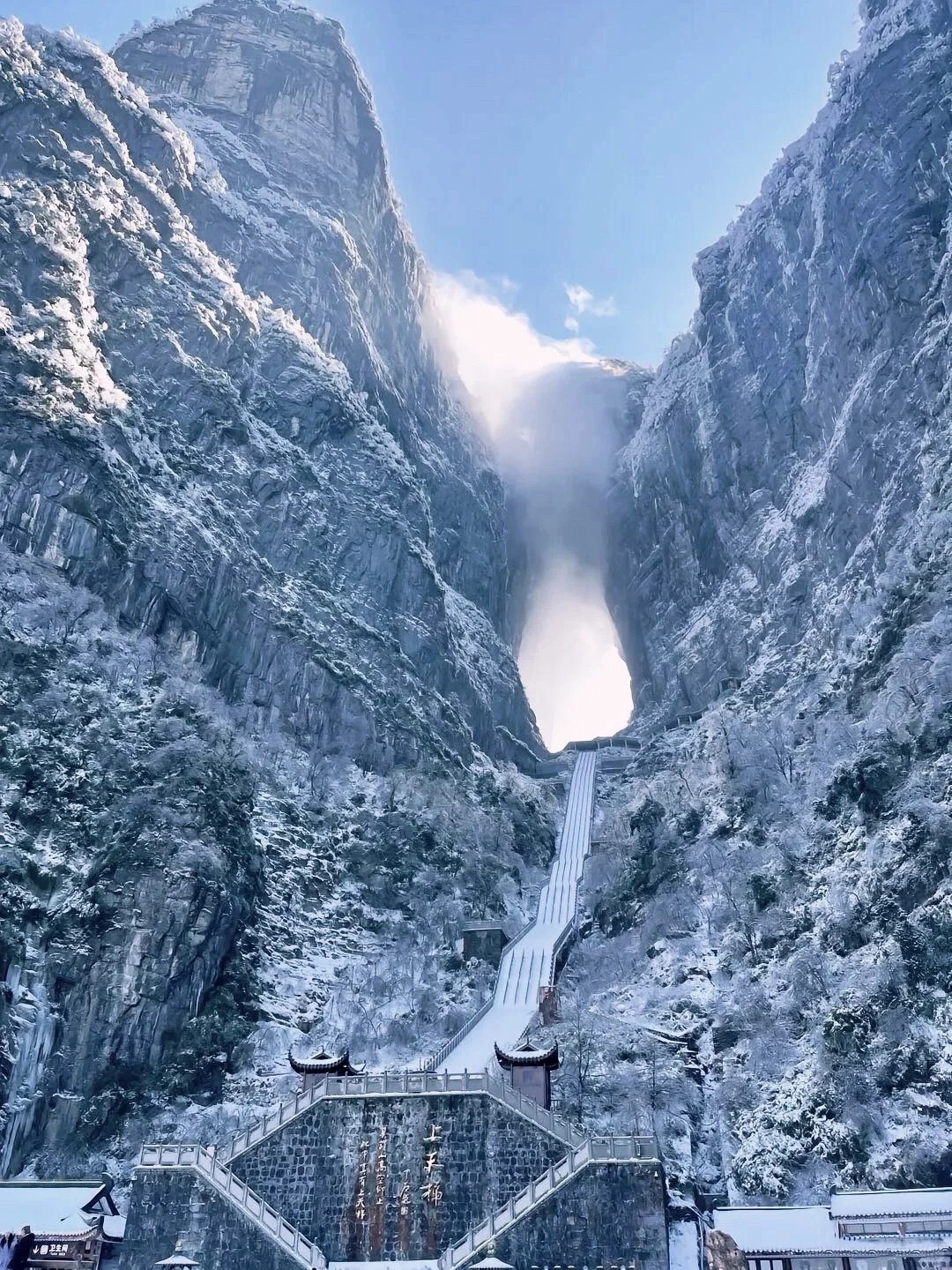 Xiaohongshu @圆圆兔ke爱旅游
Xiaohongshu @圆圆兔ke爱旅游
Photography Tip: The best shots are captured during the “golden hours” – just after sunrise or before sunset – when the low winter sun creates dramatic shadows among the peaks.
 Xiaohongshu @I领途羊国旅
Xiaohongshu @I领途羊国旅
Huangshan:A Masterpiece in Winter Whites
 Xiaohongshu @铁锤游记
Xiaohongshu @铁锤游记
Yellow Mountain immortalised in Ang Lee’s Oscar-winning Crouching Tiger, Hidden Dragon, transforms into a sublime winter artwork that seems to float between earth and sky. Its iconic granite peaks and ancient pines, bent under crystalline snow, create natural sculptures that have inspired both Chinese artists and filmmakers. Here, where legendary warriors once soared through bamboo forests in cinematic glory, winter mists weave between peaks, creating the same ethereal atmosphere that captured audiences worldwide.
 Xiaohongshu @在努力生活的田
Xiaohongshu @在努力生活的田



 Xiaohongshu @木木
Xiaohongshu @木木
The mountain’s dramatic winter persona – with ice-glazed pine needles and frost-rimmed cliffs – offers a landscape straight from classical Chinese paintings. After traversing these mystical heights, the hot springs at the mountain’s base provide welcome relief, much like the ancient martial arts masters might have sought after their gravity-defying duels.
 Xiaohongshu @Donna🐶
Xiaohongshu @Donna🐶
 Xiaohongshu @Daisy竹林
Xiaohongshu @Daisy竹林
Timing Tip: Visit mid-week to avoid domestic tourist crowds and have a better chance of witnessing the famous “sea of clouds” phenomenon.
 Xiaohongshu @一虎嘻嘻嘻
Xiaohongshu @一虎嘻嘻嘻
Travel Tips
Hotels
- Harbin’s Modern Hotel: Historic Russian architecture with period features
- Yunnan: Mix luxury resorts with boutique guesthouses for authentic experiences
- Zhangjiajie’s glass-view rooms: Spectacular winter forest views
- Chengde: Stay near the Mountain Resort for imperial atmosphere
- Huangshan’s boutique tea houses: Traditional Hui-style accommodation
Weather Expectations
-
Harbin: -20°C to -10°C (December-February) -
Xishuangbanna: 15°C to 25°C -
Dali: 5°C to 15°C -
Zhangjiajie: 5°C to 15°C -
Chengde: -10°C to 5°C -
Huangshan: 0°C to 10°C
Seasonal Experiences
-
Harbin: Book Ice Festival tickets in advance; evening visits offer spectacular illuminations -
Xishuangbanna: Dawn tea ceremonies at local plantations -
Zhangjiajie: Plan ski sessions for mornings when snow conditions are optimal -
Chengde: -10°C to 5°C
- Huangshan: Imperial ceremony reenactments on weekends
Winter in China offers a treasure trove of unforgettable experiences. From the frosty enchantment of Harbin’s Ice Festival to the tropical warmth of Xishuangbanna, each destination has something truly unique to offer. Dali, Lijiang, and Shangri-La, iconic stops along the ancient Tea Horse Road, captivate with their rich cultural heritage and stunning landscapes.
Changbai Mountain, with its snow-covered peaks and relaxing hot springs, provides the perfect winter escape, while Chengde’s historic sites take on a serene charm during the colder months. Zhangjiajie’s mystical, mist-clad mountains feel even more magical in winter, and Huangshan’s snow-capped peaks transform into a breathtaking winter wonderland. Where will you venture this winter to uncover China’s hidden gems?

